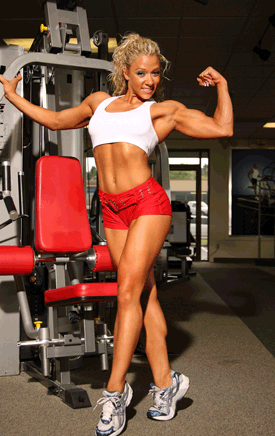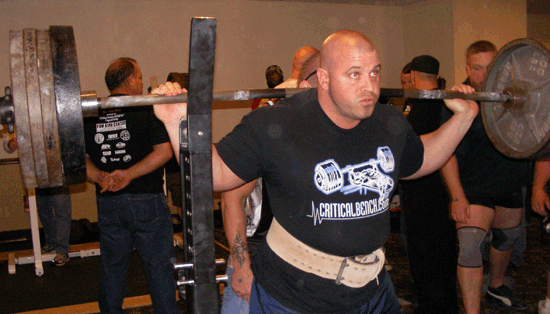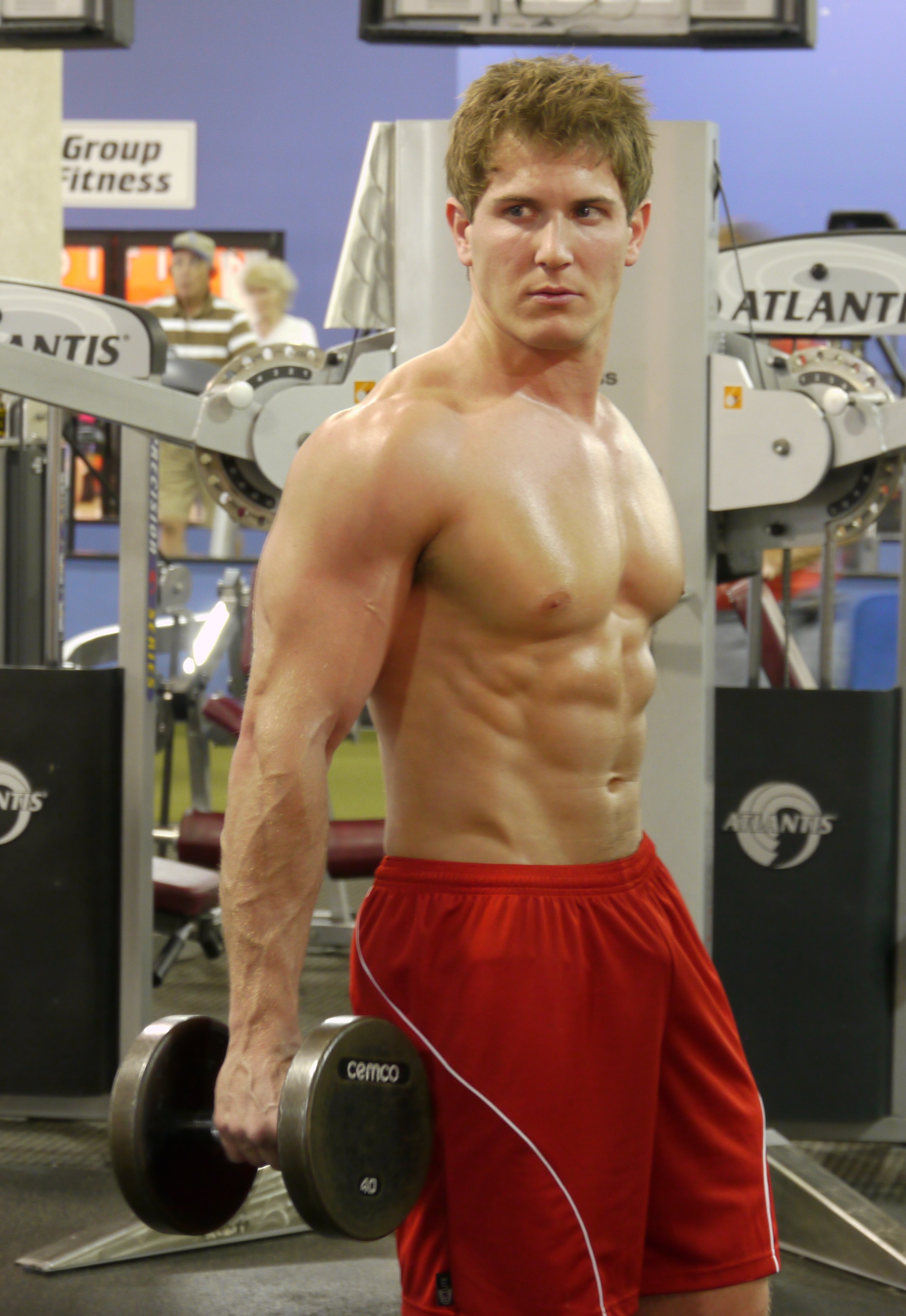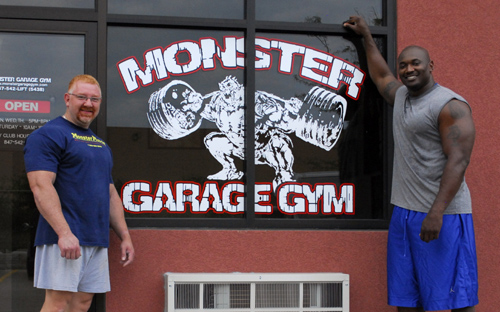What is “Working Up” and Who is it Good For?
Beginners shouldn’t work up. Novice lifters should always stick with straight weight and use what’s known as a “sets across” approach. So if the program calls for five sets of five they should pick a weight they could do for maybe eight reps and do all five sets with that weight.
For example:
135 x 5 x 5
Advanced lifters, on the other hand, should “work up.” So instead of doing five sets of five with the same weight they would work up to one top end set of five and maybe hit one back off set after that. All in all they may end up doing more than five sets. It might be closer to ten. But only one or two is a real heavy work set.
For example:
Bar x 10
95 x 5
135 x 5
185 x 5
225 x 5
250 x 5
275 x 5
315 x 5
295 x 5 (back off set)

That ends up being nine total sets. Just because only one or two sets is heavy doesn’t mean the others are useless. As anyone who has practiced speed training or the Dynamic Effort Method understands, you get a training effect with weights at as low as 50-60% of your max and above.
In the previous example, if the lifter was working up to a near five rep max with 315 we can assume a one rep max of around 370 pounds. Therefore every set above 222 will give him a training effect. In this case their are five productive sets. This is a much better approach and easier to recover from than if he just did five straight sets of five with say 295-305 pounds.
As long as you are exploding each of the “working up” sets as fast as humanly possible you are training speed while en route to your maximal strength sets. Essentially you are killing two birds with one stone. Especially if you do a large number (6-10) of “work up” sets, which I highly recommend for the big barbell lifts.
There have been plenty of times in the past where I’ve said that there’s very little reason for an advanced lifter to do more than one or two heavy sets on a big barbell exercise. On occasion people mistook that to mean I was a big proponent of HIT (High Intensity Training). That’s not the case. As you can see from the example above it’s actually closer to ten total sets but with only one or two being really heavy.
So what sets count as warm up sets and what sets count as work sets? I don’t even think about it to be honest. The line is blurred. Anything above 60% definitely elicits a training effect so if you wanted to count that would be the place to start.
The last thing I want you to do is a couple quick, half-assed warm up sets and then one or two work sets. That’s a terrible approach that doesn’t fully fire up your central nervous system and makes you more prone to injury.
What Exercises Should I “Work Up” On?

All of the big, compound barbell exercises. I never have intermediate/advanced lifters do more than one or two heavy sets on exercises like squats, deads, bench presses, military presses or deadlifts. I like to do all of these exercises for eight reps or less, for the most part, in order to maintain perfect technique and reduce the risk of injury. So we always work up to a top end set here. Note that it’s never a true rep max, just a good, clean heavy set.
You never want to do slow, grinding, ugly reps. That’s a prescription for weakness and injuries.
Certain assistance exercises are best done for sets across and others lend themselves well to working up. Bodyweightexercises like inverted rows and glute ham raises are usually best done for sets across. These types of exercises don’t beat you up too much so you can tolerate more volume on them.
Even if you are advanced it’s always best to do any new exercises you are trying out for sets across as well. For example, if you are just starting handstand pushups there is no way to really work up. So just do something like six sets of two. Or if you are just starting ring dips for the first time it would be best to do multiple sets of low reps with a constant load.
Other assistance exercises like a one arm dumbbell press lend themselves well to working up. So you might do something like this:
70 x 8
75 x 8
80 x 8 (top end set)
75 x 8 (knew you wouldn’t be able to get the 80’s again so you dropped down for one more set)
If your assistance lift is very similar to your main lift you need very little in the way of warm up or “work up” sets. If you bench press as your big lift of the day and follow it up with an incline dumbbell press your sets might look something like this:
90 x 8
100 x8
And that’s all she wrote.
The Same But Enormously Different
In my brand new ebook, Minimalist Training, I have a wide variety of set and rep schemes listed. The beauty part is that if you know the difference between “sets across” and “working up” the same loading parameters can be used for both beginner level and more advanced lifters.
Let’s say Little Johnny has a max squat of 185 and Big Bill has a max squat of 495. The program calls for ten sets of three.
Little Johnny will do ten sets of three reps with 160 pounds.
Big Bill will get to his ten sets like this:
Bar x 10
95 x 3
135 x 3
185 x 3
225 x 3
275 x 3
315 x 3
365 x 3
405 x 3
425 x 3
445 x 3
If they are doing dumbbell military presses for assistance work, Little Johnny will do four sets of eight reps with the 40’s.
Big Bill will do this:
70 x 8
80 x 8
85 x 8
90 x 8
Of course, I have different programs and different frequencies for beginner and advanced lifters but some of the set and rep schemes are sometimes similar.
The huge, colossal, magnanimous difference, however, is the “working up” part. High level intermediate to advanced lifters simply can’t do heavy “sets across” on big compound barbell or dumbbell exercises.
If you haven’t done so already pick up your copy of Minimalist Training. All the cool kids are talking about it.
guest post by Jason Ferruggia








This sounds like a great approach.
I usually stick with the straight across method, however I haven’t been seeing the results I would like. Working up maybe what I’m looking for, for my areas I want to grow.
I’ll really like to give it a try and if successful adopt it…
Hi there
Am thinking of getting a bodybuilding programme. I am training for about a year. Ectomorph. Which of your programmes should I get? Is minimalist training a good idea? Thanksm
@ Brindley as an ectomorph, I suggest you start with the Critical Bench Program which is based off power building. You’ll lift heavy for strength on your main compound lifts followed by a bit higher reps for muscle growth on your bodybuilding auxillary exercises. You can read more about it here if you’re interested: http://www.criticalbench.com/program.htm
Mike
Hi, I am 73 years as of 11/14/2010. Two years ago, I got AAU world and national records for BP & DL at 70-74, 198# lifetime. I have since moved away from my training partners namely Paul Wren (historic heavyweight power lifter) and Charlie Green. I am pretty much going it alone at a really well equipped gym but don’t have any training partners or spotters to speak of. I believe I can make progress or at least not lose too much strength using your “Working Up Method”. I use a flat bench with safety rack so that’s not a problem. I am not a brute (probably due to my age) as my max is only about 230#. What weight progression would be good for me to shoot for. I am looking to set the AAU world and national records for BP in the 75-79, 198# lifetime in a couple of years (if I can stay away from the ice cream). The record is only 140#. I have quit deadlifting (bad back). Any advice as to set progression is appreciated.
PS. I am “googleable” search on Dale Radford + bench press or powerlifting or similar. Can be looked up under AAU records Laughlin, NV, Dec. 2008. FYI, I am a record holder in the following federations, Southern Powerlifting (SPF), WABDL, Son Light Power, and WBPLA.
Hey Mike!
I have been working out for about a year now. I have lost 45lbs, and the weight loss has stopped. My starting weight was 240, I’m now 196. I have been thinking about body building. I am a mesomorph body type. What program would be good for me? I want to get big yet lose fat @ the same time. I’m also short 5’6. Thanks!
Hey Kevin, you know what my new program Lean Hybrid Muscle RELOADED sounds perfect for what you’re trying to acheive. Have you read about it? http://www.hybridleanmuscle.com Mike